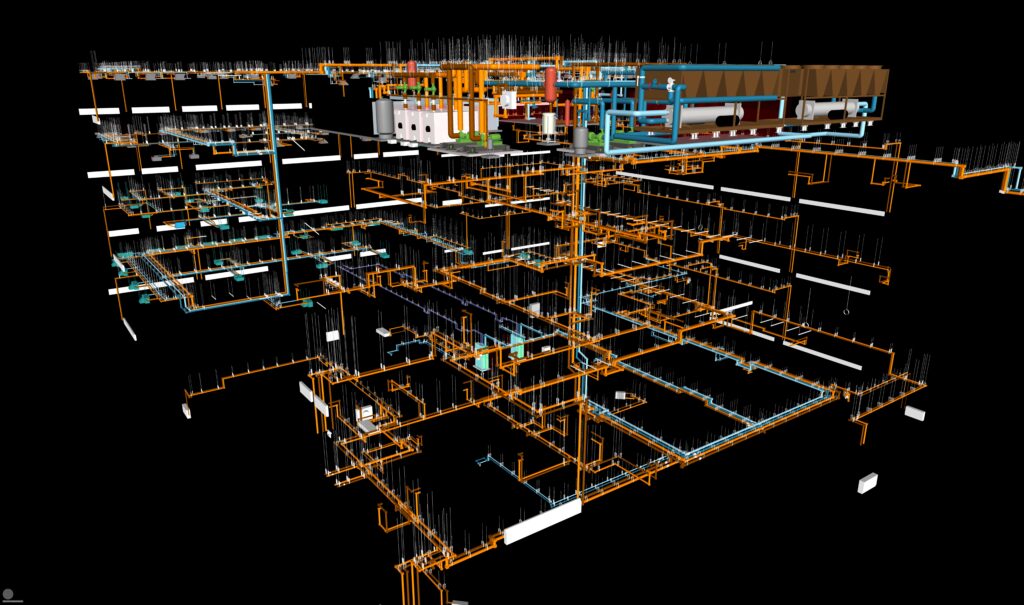Your VDC Coordinator is the Conductor in your BIM Orchestra

When you embark on a construction project, who’s the one person who’ll know your building inside and out, from its initial design concepts to the day it opens its doors? That key player is your Virtual Design and Construction (VDC) Coordinator. Alongside the Superintendent, this role makes certain that every element of the building’s design is both understood and seamlessly integrated through the Building Information Model (BIM) – the digital backbone of your project.
Early in the project, the VDC Coordinator becomes the central authority on the model, knowing the ins and outs of each trade’s contributions, which Addendum or RFI will impact a specific area, and if the overall design can be built as provided by the design team. The coordinator will also request new models from the design team, ask a trade to shift a duct in a coordination meeting, or find a better way to route conduit through a tight path. When the project finishes, they will provide the BIM to the building owner so that they begin the process of operations & maintenance.
In short, the VDC Coordinator is the conductor in your BIM orchestra, where every participant- from the design team and contractors to fabricators and subcontractors- plays an essential part. The coordinator’s role is to orchestrate all these efforts so that everything works in harmony.
From previous experience, we have seen how much this role embeds one into the project and how a VDC Coordinator almost becomes an extension of the building. The VDC Coordinator will constantly be asked for information, generate troves of data, research issues, expedite/generate RFI’s, and find creative ways to solve problems for the field. This may be by utilizing the BIM for additional modeling of one-off items, coordination, clash detection, drafting, animations, renderings, 4D (animation over time), and/or 5D (model with cost data). It could also be by integrating a laser scan/point cloud to confirm existing conditions against the model or utilizing Unmanned Aircraft System (UAS) data for civil overlay content to supplement the BIM. As the project’s “conductor”, the VDC Coordinator will integrate all of these items in a way that maintains the project’s integrity. The conductor maintains technology and access credentials, coordinates subcontractor files encompassing the overall BIM, and distributes meeting minutes in a timely manner. The coordinator has knowledge of computer systems and software, general building construction, architectural, civil, sub-trades (mechanical, electrical, plumbing, fire protection), and even specialties like food service, laboratory, theatrical, pneumatic tube, or general manufacturing practices.
The VDC Coordinator will work many hours on the project, coming into the office early with the superintendents to fly the BIM and answer their questions, and staying late trying to catch up on email and keep the administrative tasks moving forward.
When all of this goes well, the VDC Coordinator leads a well-synchronized effort that produces a visually and structurally sound building model. This 3D digital model becomes a powerful asset, allowing clients to visualize the finished project well before the first brick is laid. It saves time, cuts costs, and ultimately becomes a source of pride for the entire team.
As we like to say, “we build buildings in 3D before they’re built.” Your VDC Coordinator is the one who conducts the team to turn the digital model into a reality – orchestrating a masterpiece for everyone involved. Ready to bring your vision to life? Contact Haley Ward today to learn how our expert team can support your project every step of the way.